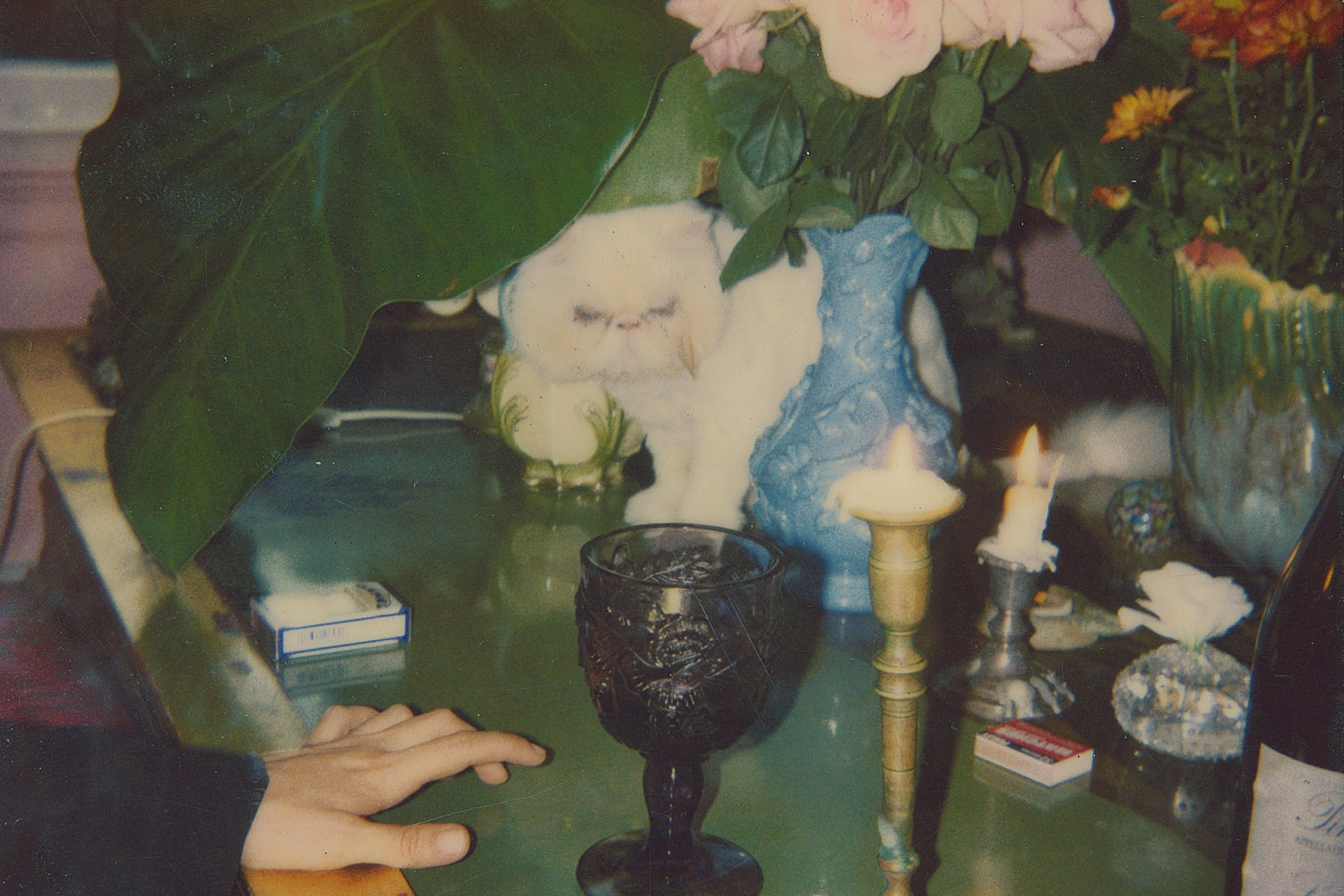
Dash Snow
Untitled, 2000-2009 (detail)
Digital c-print from Polaroid
24 x 24 inches
(50.8 x 50.8 cm)
Courtesy of the Dash Snow Archive, NYC and Morán Morán
Dash Snow: CarrionCurated by Jeppe Ugelvig
Alors, ô ma beauté! dites à la vermine
Qui vous mangera de baisers,
Que j'ai gardé la forme et l'essence divine
De mes amours décomposés!
—Charles Baudelaire
Morán Morán is pleased to present Carrion, a survey of the photographic Polaroid work of U.S. artist Dash Snow (1981–2009), curated by Jeppe Ugelvig. The exhibition inaugurates the gallery’s Paris project space located in the Marais.
There have been few greater poets of the decline of the American empire than Dash Snow. As a graffiti artist, photographer, zine-maker, collagist, sculptor, and irreverent downtown bon vivant, Snow aesthetically metabolized the brooding sense of civilizational collapse prevalent at the dawn of the new millennium—exploiting the absurd poetics of that era’s fraught media response to dictators, drugs, wayward celebrities, serial killers, terrorists, immigrants, and perverts. He did this from the perfectly delirious stage that was New York City, a metropolis still emerging from decades of negligence—not to mention the tragic absurdity of 9/11. Behind America’s televised delirium was Snow’s underworld of demented urbanites, slackers, and proto-hipsters, desperately clinging to the last breaths of analogue life. This exceptional ecology, so imminently threatened by extinction, demanded non-stop photographic documentation—something Snow recognized acutely, to the point that he would come to embody it, and die with it.
Responding to the exhibition’s host city, Carrion casts Snow’s vile voyage through the millennial metropolis in the light of French Symbolism, which, a century and a half before him, prototyped many of the same aesthetic themes. Responding to the still-emerging sensorium of consumer capitalism—its frenzied temporality of renewal and decay—Baudelaire, like Snow, sought to portray the modern city as an entire ecology of allegorical creatures and spaces. Infusing the classic myths of death and desire into the banal surfaces of consumerism, sexual perversion, and urban squalor, Symbolism took its decrepit contemporary deeply seriously, though in the aesthetic guise of a much older order. With his Polaroid camera, Snow (whose background afforded him a keen sense of art history) similarly came to speak the brand-new language of image-fueled social media in the tongues of masters before him—those of Kertész, Brassaï, Sander, and Atget.
Taking its title from Baudelaire’s macabre poem about encountering a gorgeously vile corpse in the street, Carrion is conceived as a formal study of Snow’s sense of urban ethnography as it played out most spectacularly in his photographic depictions of people, streets, bars, hotels, and bedrooms; in trains, on roofs, in catacombs. Snow’s endearing yet dissonant images of bodies, objects, sensations, and encounters—frequently infused with both the sacred and the profane—extend Baudelaire’s aesthetic project into a newer but equally inchoate age: an age to which the most immediate reaction would be disassociation. Snow’s reaction, however, is closer to mythology, busy as he was producing what Baudelaire might have called a visual “dictionary of living hieroglyphics.”
“Seizing the moment was one of Dash’s exemplary qualities,” writes his friend, the artist Matt Kenny—a quality evident in Snow’s use of Polaroid, the medium of total instantaneity and material exchange. The artist’s narcissistic and seemingly diaristic approach to photography is deceptive, however, manipulating what might otherwise constitute memory in an intoxicated, hypermediated age. This was lost on many of Snow’s contemporary critics—as it may still be. Yet as an eye in feverish pursuit of outrage for the sake of outrage, of social reactivity as photography’s means as well as its ends, Snow was profanely insightful about the time to come. This was the image-making sensibility that has come to define the aesthetic of the digital 21st century, whose de facto medium is the private photo album. And yet Snow’s is an eye repeatedly distracted by the quiet poetry—and black humor—found in the city’s most unassuming backdrops: in broken glass, in a dog on the street, in a graffiti tag. Snow’s work, then, is both a forecast and an artifact of a bygone era. Indeed, therein lies its deep originality.
Carrion presents Snow not (just) as a socializer but as an uncompromising fin-de-siècle romantic—one who understood how to aesthetically stage the world around him in the most dramatic of ways, cost what it will—that is, without ever being seduced by the corniness that is fiction.
—Jeppe Ugelvig, New York, October 2025
Jeppe Ugelvig (b. 1993) is a curator, historian, and cultural critic based in New York City. He holds a Ph.D. from UC Santa Cruz, where he researched artistic responses to 20th-century consumerism. He is the author of Commodity Ecumene (2024); Fashion Work (2020); and the founding editor-in-chief of Viscose, a journal for fashion criticism. Ugelvig has staged exhibitions worldwide and held curatorial residencies at MMCA Seoul, Delfina Foundation London, and ISCP New York. Recent projects include co-curating the 2024 UN public art exhibition Future Ours alongside Hans Ulrich Obrist, and exhibitions such as The Endless Garment (X Museum, Beijing), Witch-Hunt (Kunsthal Charlottenborg), and Phantom Plane (Tai Kwun, Hong Kong). His criticism appears regularly in Artforum, Frieze, and Spike Art Quarterly.
Dates
October 21 - November 29, 2025Opening Reception
Tuesday, October 21, 6-8pmLocation
5 Rue Saint-Gilles75003 Paris

